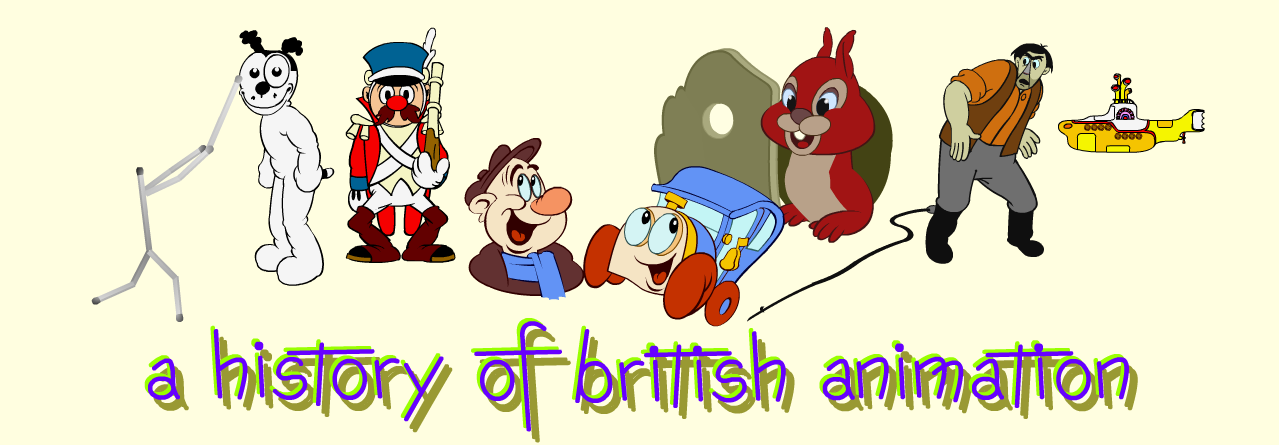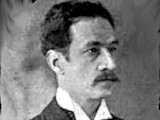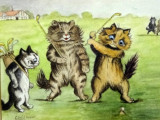

|
 | Louis Wain(1860-1939) |  |
||
BiographyLouis William Wain was born in Clerkenwell, London on 5 August 1860, first child of textile salesman William Wain and his French wife Julie Felicie. He was followed by five younger sisters. Louis studied at the West London School of Art 1877-1881. In 1880 his father died, and Louis' earnings were needed to help support the family. His mother worked as a Church embroidery designer but his sisters were still being educated, by a daily governess, Emily Richardson. Louis took a teaching position at the School of Art while submitting freelance illustrations to various publications, predominately animal and country scenes. In 1882 he joined the staff of the Illustrated Sporting and Dramatic News and in 1884 he married Emily Richardson, moving to Hampstead, North London. Sadly, Emily died of cancer three years later. As the disease progressed she had found comfort in their black and white cat, Peter, and Louis made several studies of Peter, which Emily encouraged him to get published. Louis Wain later wrote "To him properly belongs the foundation of my career, the developments of my initial efforts, and the establishing of my work." For the 1886 Christmas issue of the Illustrated London News Wain created a montage of ten scenes titled A Kittens' Christmas Party. A double-page spread, it is his first published picture to show anthropomorphised cats, although at this stage the emphasis is more on feline behaviour than human. After Emily's death Louis returned to live with his mother and sisters. The family moved out of London to Westgate-on-Sea, Kent. Claire and Felicie earned a little money as artists. The Victorians delighted in anthropomorphic images and Louis' cat drawings became hugely popular: alongside Harrison Weir, the naturalist, writer and illustrator who founded the National Cat Club, Louis Wain is credited with changing the public attitude towards cats. In 1890, on Harrison Weir's retirement, Wain became Chairman of the National Cat Club. Despite his success, Louis was not good at managing his money. In the early days he had sold the copyright with his artwork. This was a fairly common practice, especially with jobbing artists, as it provided the higher initial payment, but as Louis became famous these earlier works were republished with no royalties due him. He was also persuaded to invest in several busines ventures that failed. In the early part of 1901 Louis' second-youngest sister, Marie, suffered some sort of mental disorder, and, at the age of 34, was committed to the Kent County Lunatic Asylum. Louis Wain produced the first Louis Wain's Annual for Christmas 1901. The Annual ran until 1915 and Wain edited it himself, soliciting articles from prominent pet-owning writers and humourists to appear between his own drawings and cartoons, and it remained highly popular. In October 1907 he sailed to New York, where he drew a series of Sunday pages for Hearst Newspapers. He continued to edit his Annual from New York. He returned to England in September 1910. His mother had died in January of that year; three years later his sister Marie died in the asylum, from colitis brought on by a bout of pleurisy, at the age of 46. During the First World War, although no longer editing his Annual, Louis continued providing artwork for other Christmas Annuals, newspapers and magazines, as well as performing his lightning artist act, often for charities. He illustrated a childrens' book, Terrier VC (a fictional account of a smart dog who follows his master to War), written by Julia Lowndes Tracy and published in November 1915, on behalf of the Blue Cross Fund for Wounded War Horses. After repeated bombing raids on Dover in the summer of 1916, Louis and his four sisters decided to return to London, taking a house in Brondesbury Road, North Kilburn, which would be their final family home. Sadly, in April 1917 his eldest sister, Caroline, died of pneumonia at the age of 53. By the end of the War it was clear that Louis Wain's cats were no longer as popular as they had been. the Wains' finances were still precarious and as time went on Louis' behaviour began to grow irrational. In 1924 he was certified insane and placed in the pauper's ward at the Springfield Mental Hospital, Tooting. In August 1925 his predicament was discovered, and Mr H P Bastow, the editor of Animals magazine, organised an appeal for funds, originally a target of £1000, to remove him to a paid asylum ward. When the appeal fund officially opened it had already received over £600. Ramsay MacDonald, leader of the Labour Party, wrote a tribute and H G Wells penned a piece that was broadcast on the radio. On 9 September it was reported that over £1600 had been raised and Wain had been transfered to Bethlem Royal Hospital, Lambeth, where he was able to draw and paint in comfort. However, the discovery that Louis had dependent relatives has necessitated raising the appeal target to £2500 or £3000. Besides appealling for donations, the fund auctioned Louis Wain artwork, published a Louis Wain souvenir edition of Animals in October and, for Christmas, a Louis Wain Annual, all profits going to the fund. In April 1929 it was revealed that the fund had been badly managed and of the £2313 raised the Wains had received only £600, £1332 having been spent on general expenses, exhibition expenses and the production and posting of the souvenir edition of Animals and the Annual. Mr Bastow had kept the fund money in the same account he used for Animals magazine and payments to W E Baxter Ltd, the proprietors of the periodical. Believing himself to own half the magazine, Bastow claimed he had paid £500 from the account to W E Baxter Ltd to buy out their share. Baxters denied that Bastow was a co-proprietor and stated that they had not received the £500. They had fired Bastow in 1926, closing the magazine. Barstow admitted the fund had been badly handled and the Public Prosecutor decided that there were no grounds for prosecution. Ramsay MacDonald immediately opened a new fund to support Louis and his sisters. In 1930 the Bethlem Hospital moved to the SE London suburb of Beckenham, Kent. To enable his sisters easier visiting access Louis was instead transferred to The Middlesex County Asylum at Napsbury, near St Albans, Hertfordshire. Besides its pleasant environs the hospital had its own colony of cats. Here he created a series of brightly coloured cat-based decorative designs. The progression of these intricate patterns was used to suggest a correlation with his increasing schizophrenia, but the validity of the chronology is in doubt, and it has been suggested that he was also creating normal sketches and typical cartoon cat pictures during this time and that his condition may not have been schizophrenia at all. Louis William Wain died in the Napsbury asylum on 4 July 1939, at the age of 78. AnimationWain had two encounters with the world of animation. Around 1910 the producer, director and model animator Arthur Melbourne-Cooper, inspired by Emile Cohl and perhaps Winsor McCay, wanted to create a drawn animated film (one drawing per frame). Not being a draughtsman himself he first approached the artist Harry Furniss who, on learning between 600-900 drawings would be needed per minute of film, rejected the idea outright. Cooper then approached Wain, who apparently asked for a downpayment of £1000 (the equivalent of £120,000 in 2020). This was beyond Cooper's means and he abandoned the idea. In 1917 Wain was approached by director George Pearson and H D Wood, General Manager of the Gaumont Company Ltd, to make a series of cartoon films based on his drawings. It is not clear whether Wain was expected to create the animation or they had an animator and only wanted Wain's name and artwork. The type of animation employed in Britain at this time was primarily cut-out animation, and it is most likely that this was used for Wain's films. The first film, The Golfing Cat, was released on 4 October 1917, one of a set of 12 shorts, mainly live-action scenic films, that was shown to the trade in August. The Biograph reviewer, having used words like "beautiful", "interesting" and "delightful" to describe the scenic films, described The Golfing Cat as "A quaint example of the work of the famous artist, Louis Wain, whose cats are known the whole world over." The second film, The Hunter and the Dog, is more mysterious. Denis Gifford believed that a copy of the film was held in the National Film Archive but it appears that this was actually Hunter and Dog (USA 1915), one of Raoul Barré's Animated Grouch Chaser cartoon series, mistakenly catalogued as Wain's film. I don't know if this was Gifford's only source or whether he had seen The Hunter and the Dog listed in Gaumont's catalogue. There is no record of a release date or any reviews. Gifford suggests it could have been included in a Gaumont newsreel. In 2014 the auction house Bonhams sold a lot originally from the estate of R J Minney, who in the 1930s was to enter the film industry first as a screenwriter and then as a producer. Prior to this he was a novellist and drama critic. The lot featured a drawing of a cat by Louis Wain, presented as a Christmas card, but also included were seven letters from Wain written in the early 1920s, one of which, dated 1921, had attached some frames of film from The Golfing Cat. Wain writes "...I am doing some films for the Cinema firms & the enclosed is a small piece of one film I have already had out with the Gaumont Company..." The other letters discuss pictures and prices. Unfortunately Bonhams did not think the frames significant enough to reproduce in the catalogue. The idea that Wain was still hoping for more film work indicates the difficulty he was having in finding sufficient commissions, but no further animation films were made. It may be significant that he mentions only one film for Gaumont, but it may just be that he had no clippings from The Hunter and the Dog to show. |
Filmography | ||||
| The Golfing Cat | (Gaumont, 4 October 1917) Designer, animator(?) | |||
| The Hunter and the Dog (Unconfirmed) | (Gaumont, 1917) Designer, animator(?) | |||
Links to Other Sites | ||||
Illustration Chronicles Cute Cats and Psychedelia: The Tragic Life of Louis Wain - article by Philip Kennedy | ||||
Cat-o-pedia The History Project: People: Louis Wain - assembled facts, images and articles | ||||
Digital Arts 100 years before cats conquered the internet... London gallery owner Chris Beetles discusses the often-tragic life and incredible work of Edwardian Britain's best-loved cat artist with Tamlin Magee. |
Peter Hale
Last updated 2016
|